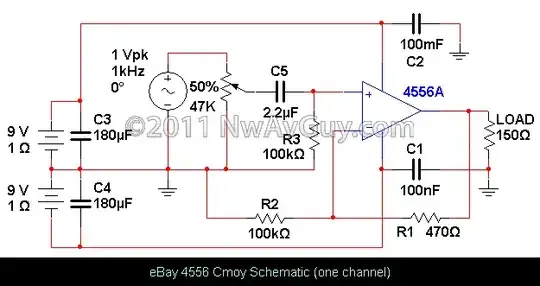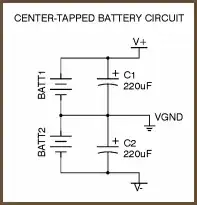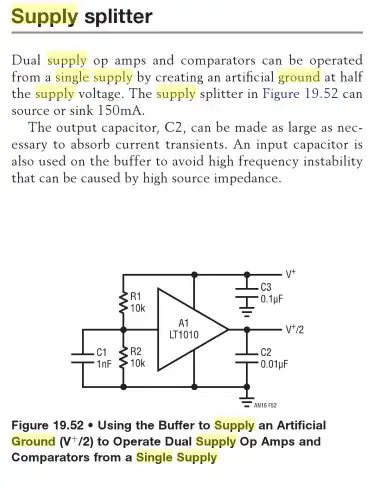Well based on the schematic they use a different approach to get a split supply for the op-amp, like you mention using two equal sized resistors.
The reason why they do this (as they say) compared to the way it is done in your first link is, that the batteries can drain unevenly, in which the first approach (center-tapping the batteries) can lead to uneven +/- volatages, which might distort the audio.
With the resistor approach you always get a nice even split.
A virtual ground (in my thinking) is needed when you have a single supply op-amp but you need to amplify a signal which would go below the supply rail.
For example: you get a sine-wave with 1 V peak-peak, referenced to your ground, so it goes from -0.5 V to 0.5 V.
You want to amplify it to 3 V peak-peak, but the op-amp only has a supply of +5 V and 0 V. You are not allowed to apply a signal above and below the supply rails to the op-amp, so you have to shift the input signal to a point, where it will not go below the 0 V line.
In most cases (symmetrical signals) you'd go for a level in the middle of your supply rail. 2.5 V in this case. This is the virtual ground, because the signal you are interested in will be referenced to that value from now on.
So you couple the signal onto your 2.5 V virtual ground to get it up there, and the op-amp is now able to amplify it nicely to a 3 V peak-peak sine wave. But that 3 V peak-peak is referenced to the virtual ground.
If you measure the voltage from the "real" ground (the op-amps 0 V) the amplified sine wave will go from 1 V to 4 V (3 V peak-peak but riding on 2.5 V).
But really, ground is just a reference, in my example I said that the supply negative terminal is 0 V and the positive terminal is 5 V. So my ground was the supply negative terminal. I could have arbitrarily chosen -2.5 V and 2.5 V, but that would have made my 0 V not really available to the circuit. (and because of that the input signal would be on -3 V to -2 V probably)
Maybe you could say that a virtual ground has not the lowest impedance path to the supply (because it has to go through some resistors or op-amp if you have an active virtual ground) compared to the real ground. Or it's just the way it is commonly chosen.




